
Myth One
Air pollution is just an urban problem
Fact One
Poor air quality is not solely an urban problem. It also severely affects many small cities, suburbs and rural areas. Air pollution sources in rural areas typically differ from those in urban areas.24 Solid biofuel used for cooking and heating, forest fires and agricultural burning are common sources in rural areas. But air pollution never remains where it is emitted. Pollutants (especially fine particles) can travel over long distances due to dispersion from the stratosphere and regional transport of pollutants by prevailing winds from urban sources to rural areas and vice versa. An example of the regional transport of air pollution is the transboundary haze pollution arising from forest and land fires in Indonesia that affect neighbouring Malaysia, Singapore and Brunei.
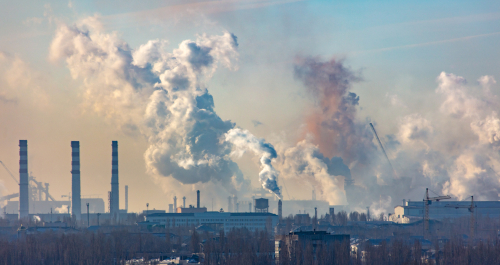
Myth two
Cars are usually the major source of air pollution
Fact two
While cars are often considered an important source of air pollution, other emission sources that can contribute significantly to air pollution include heat and power generation, industrial facilities, agricultural waste or biomass burning, shipping and aviation, and residential cooking with polluting fuels.9 The contribution of air pollution from different emission sources varies with seasons and time of day. For example, Hong Kong reports higher pollution concentrations emission from wood/biomass burning and coal combustion in power plants and industrial facilities in the adjacent Pearl River Delta region during winter months.10 Therefore, long-term inter-sectoral and inter-state control strategies are needed to adequately address emissions. Studies have generally shown that the odd-and-even traffic restriction policies alone do not yield significant reduction in overall traffic volume11,12 or air pollutant concentrations across cities in China, India and Mexico.13,14

Myth Three
Air quality is better indoors than outdoors
Fact Three
Indoor air pollution is an important public health threat, as people typically spend over 90% of their daily time indoors. Indoor air pollution is caused by both outdoor air pollution penetrating into the indoor environment, and by pollutants generated by indoor sources such as household solid fuels used in cooking, environmental tobacco smoke, paint, carpets, and cleaning products. The U.S. Environmental Protection Agency reported that indoor air pollution concentrations can be on an average 2-5 times higher than outdoor concentrations, and in some instances, levels of certain pollutants can even be 1,000 times greater indoors than outdoors.6 In 2016 it was estimated that 3.8 million deaths occur globally each year as a result of household cooking that use solid fuels and inefficient stoves; this estimate is closely trailing 4.2 million deaths from outdoor air pollution.3
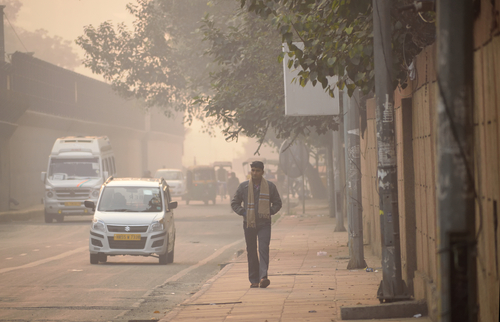
Myth Four
Only ‘sensitive’ people are affected by air pollution
Fact Four
Air pollution damages health and wellbeing from womb to death.1 Not only has air pollution been associated with individuals at the extremes of age (e.g., infants or elderly) or those with pre-existing diseases (e.g., chronic respiratory diseases or heart disease), growing evidence has linked air pollution exposure to new-onset cardiovascular, cancer and pulmonary disease in previously healthy individuals.2 Exposure in childhood has lifelong impacts on cognitive and physical development. Everyone is at risk from the health effects of air pollution.

Myth Five
If the air isn’t hazy then it’s safe
Fact Five
While air pollution at very high concentrations can form visible haze and smog, most of the air pollution we experience is at concentrations that are invisible and odourless. Nine out of ten people worldwide live in places where air quality exceeds World Health Organization (WHO) guideline limits.3 There is no safe level of air pollution. Studies demonstrate that there is no threshold below which population risk of illness is not elevated. 4 5

Myth Six
You can get used to air pollution
Fact Six
Long-term exposure to ambient air pollution (particularly PM2.5) is associated with serious adverse health effects that include worsened respiratory symptoms, cancer incidence, heart attack stroke and premature death.10 18 19. In fact, studies consistently report considerably larger cumulative health effects from long-term exposures than those from short-term exposures after taking into account other individual risk factors.20 21 The longer one is exposed to air pollution, the greater the risk of serious adverse health impact.
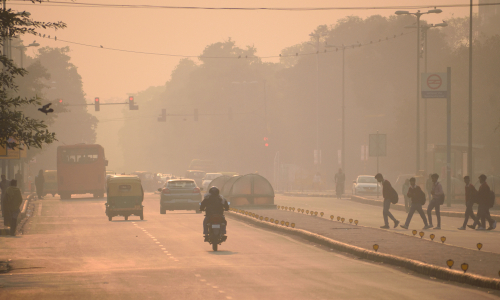
Myth Seven
All you need is a good air filter or mask to protect yourself from air pollution
Fact Seven
Most air filters are designed to remove either particulate matter or gaseous pollutants; though some combine filters to achieve both (read more on how to select air filter/cleaners here). Particulate and gas filters require frequent filter replacement, and higher the pollutant concentrations, the more frequent the replacement and the higher the maintenance costs. Without proper maintenance, the efficacy of air filters declines. 7 The effectiveness of respirators and face masks depends on the type of pollutants, mask design and how they are used.8 Simple paper dust masks are generally useless when it comes to reducing pollution exposure. Even better designed respirators like N95 masks may offer inadequate protection when worn, primarily due to poor facial fit. 8 It is important to keep in mind that no air-filter or face mask will eliminate all the air pollutants from the air, especially ultrafine particles (e.g., 0.3 microns in diameter). A better solution is to remove air pollution emission sources.

Myth Eight
Taking vitamins reduces your risk from air pollution
Fact Eight
While some vitamins and minerals may have health benefits for some people who are deficient in specific nutrients, direct evidence linking supplements to protection against air pollution is scarce. It is difficult to study whether supplements reduce the risks from air pollution. There are hundreds of vitamins and minerals on the market, their quality and dose varies dramatically, animal studies do not necessarily translate to humans, and it difficult in human studies to control the role of diet, physical health, co-morbid illness, medication use and other environmental exposures.22, 23 Dietary supplements are not without their own risks, and can cause metabolic, kidney, liver and other health problems. For these reasons, the best solutions are those that reduce exposure to air pollutants.
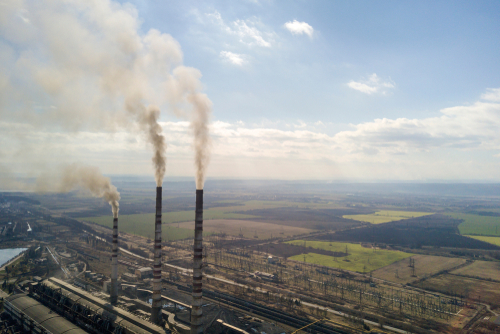
Myth Nine
Air pollution in a city can be controlled by moving polluting industries to outside the city limits
Fact Nine
Zoning solutions that help separate polluting companies from dense urban populations have helped reduce local exposures to air pollution. But power plants, waste facilities and heavy industry that are large emitters of particulates, sulfur and other pollutants can still affect urban air pollution. Because of long distance transport of pollutants, cities can suffer from emissions located hundreds of miles away. Regional regulations and emission control strategies are needed to adequately address air pollution problems.
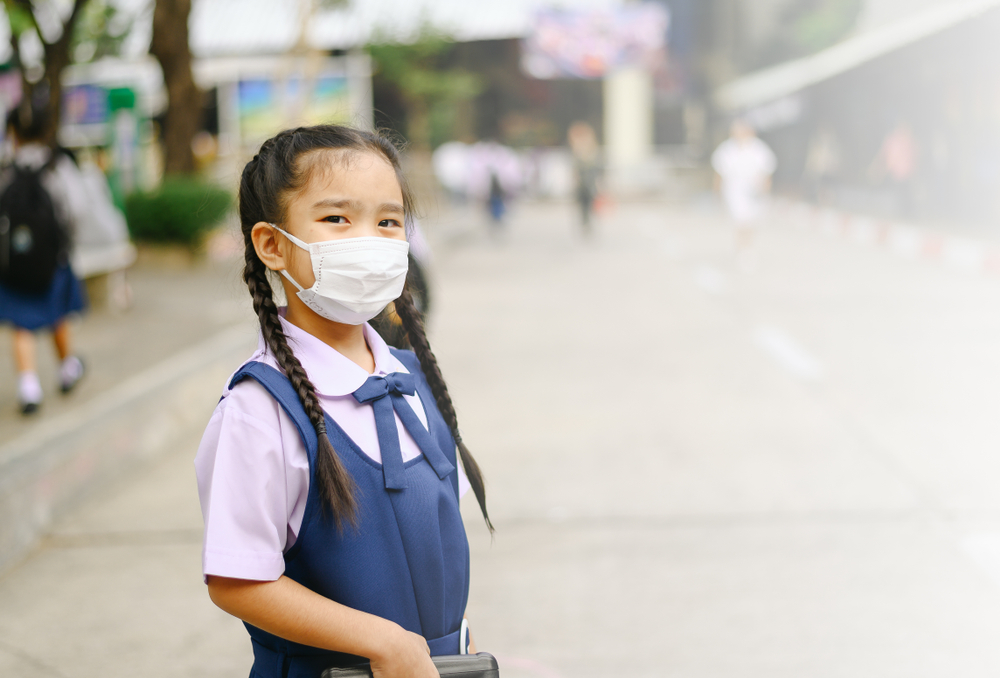
Myth Ten
Controlling air pollution will hamper economic growth
Fact Ten
Ambient and household air pollution imposes tremendous public health and environmental burden and constrains economic growth of any society. Each year, 7 million people die prematurely as a result of air pollution;3 and it is estimated that the welfare losses of premature deaths related to air pollution worldwide was over US$5 trillion in 2013, and this cost in East and South Asia can be as high as 7.5% of its Gross Domestic Product.15 While environmental measures entail certain pollution control expenditures, these costs have been demonstrated to be significantly offset by the economic benefits and savings in healthcare, premature mortality, and improved social and development outcomes, with conservative estimate of the benefit-to-cost ratio exceeding 14 to 1, and the ratio could reach 50 to 1. Thus, air pollution control is an imperative matter to tackle without delay.
Reference
1. European Respiratory Society. Outdoor environment. European Lung White Book. https://www.erswhitebook.org/chapters/outdoor-environment/. Published 2018. Accessed October 15, 2018.
2. Hooper LG, Kaufman JD. Ambient Air Pollution and Clinical Implications for Susceptible Populations. Ann Am Thorac Soc. 2018;15:64-68. doi:10.1513/AnnalsATS.201707-574MG
3. World Health Organization. WHO | Air pollution. WHO. https://www.who.int/airpollution/en/. Published 2018. Accessed October 16, 2018.
4. World Health Organization. Ambient (outdoor) air quality and health. https://www.who.int/news-room/fact-sheets/detail/ambient-(outdoor)-air-quality-and-health. Accessed October 16, 2018.
5. Adrian G. Barnett. It’s safe to say there is no safe level of air pollution. Aust N Z J Public Health. 2014;38(5):407-408. doi:10.1111/1753-6405.12264
6. U.S. Environmental Protection Agency. Volatile Organic Compounds’ Impact on Indoor Air Quality. https://www.epa.gov/indoor-air-quality-iaq/volatile-organic-compounds-impact-indoor-air-quality. Published 2017. Accessed October 16, 2018.
7. Vijayan VK, Paramesh H, Salvi SS, Dalal AAK. Enhancing indoor air quality – The air filter advantage. Lung India. 2015;32(5):473-479. doi:10.4103/0970-2113.164174
8. Cherrie JW, Apsley A, Cowie H, et al. Effectiveness of face masks used to protect Beijing residents against particulate air pollution. Occup Environ Med. 2018;75(6):446-452. doi:10.1136/oemed-2017-104765
9. World Health Organization. WHO | Ambient air pollution: Pollutants. WHO. https://www.who.int/airpollution/ambient/pollutants/en/. Published 2017. Accessed October 16, 2018.
10. Brunst KJ, Ryan PH, Brokamp C, et al. Timing and duration of traffic-related air pollution exposure and the risk for childhood wheeze and asthma. Am J Respir Crit Care Med. 2015;192(4):421-427. doi:10.1164/rccm.201407-1314OC
11. Liu Z, Li R, Wang X, Shang P. Effects of vehicle restriction policies: Analysis using license plate recognition data in Langfang, China. Transp Res Part A Policy Pract. 2018;118:89-103. doi:10.1016/j.tra.2018.09.001
12. Li R, Guo M. Effects of odd–even traffic restriction on travel speed and traffic volume: Evidence from Beijing Olympic Games. J Traffic Transp Eng (English Ed. 2016;3(1):71-81. doi:10.1016/J.JTTE.2016.01.002
13. Chowdhury S, Dey S, Tripathi SN, Beig G, Mishra AK, Sharma S. “Traffic intervention” policy fails to mitigate air pollution in megacity Delhi. Environ Sci Policy. 2017;74:8-13. doi:10.1016/j.envsci.2017.04.018
14. Kumar P, Gulia S, Harrison RM, Khare M. The influence of odd–even car trial on fine and coarse particles in Delhi. Environ Pollut. 2017;225:20-30. doi:10.1016/j.envpol.2017.03.017
15. The WHO Regional Office for Europe. Review of Evidence on Health Aspects of Air Pollution – REVIHAAP.; 2013. www.euro.who.int. Accessed October 16, 2018.
16. Hoek G, Krishnan RM, Beelen R, et al. Long-term air pollution exposure and cardio- respiratory mortality: a review. Environ Health. 2013;12(1):43. doi:10.1186/1476-069X-12-43
17. Apte JS, Brauer M, Cohen AJ, Ezzati M, Arden C. Ambient PM2.5 Reduces Global and Regional Life Expectancy. 2018. doi:10.1021/acs.estlett.8b00360
18. Pope CA, Dockery DW. Health effects of fine particulate air pollution: lines that connect. J Air Waste Manag Assoc. 2006;56(6):709-742. https://www.ncbi.nlm.nih.gov/pubmed/16805397. Accessed August 3, 2011.
19. Hoek G, Krishnan RM, Beelen R, et al. Long-term air pollution exposure and cardio- respiratory mortality: a review. Environ Health. 2013;12(1):43. doi:10.1186/1476-069X-12-43
20. Apte JS, Brauer M, Cohen AJ, Ezzati M, Arden C. Ambient PM2.5 Reduces Global and Regional Life Expectancy. 2018. doi:10.1021/acs.estlett.8b00360
21. Pope CA, Dockery DW. Health effects of fine particulate air pollution: lines that connect. J Air Waste Manag Assoc. 2006;56(6):709-742. https://www.ncbi.nlm.nih.gov/pubmed/16805397. Accessed August 3, 2011.
22. Lucock M, Jones P, Veysey M, Beckett E. B vitamins and pollution, an interesting, emerging, yet incomplete picture of folate and the exposome. Proc Natl Acad Sci. 2017;114(20):E3878-E3879. doi:10.1073/pnas.1704662114
23. Whyand T, Hurst JR, Beckles M, Caplin ME. Pollution and respiratory disease: can diet or supplements help? A review. Respir Res. 2018;19(1):79. doi:10.1186/s12931-018-0785-0
24. Rafaj P, Kiesewetter G, Gül T, et al. Outlook for clean air in the context of sustainable development goals. Glob Environ Chang. 2018;53:1-11. doi:10.1016/j.gloenvcha.2018.08.008